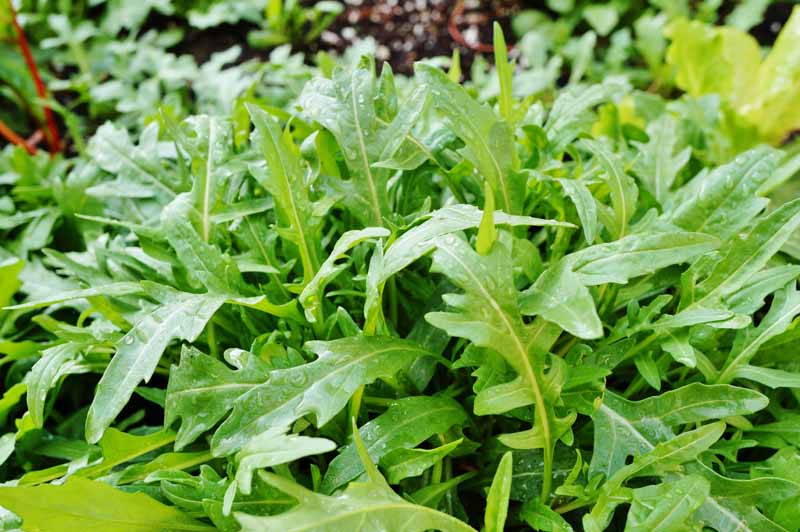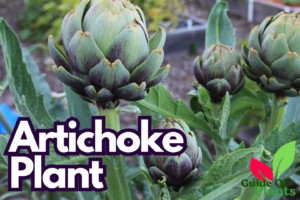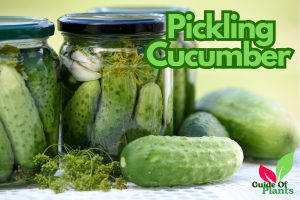There are many great reasons to grow your own fruits, vegetables, herbs and more right in your backyard or garden. Homegrown produce provides health benefits, cost savings, and the satisfaction of knowing exactly what’s going into the food your family eats. For beginner gardeners, starting with a few hardy, beginner-friendly plants can set you up for success as you learn the basics of gardening. Growing rocket vegetable, tomatoes, lettuce, and plants such as basil and oregano are great options for first-time growers.
Table of Contents
Related Posts:
- Cayenne Pepper Plant, A Spicy and Nutritious Garden Favorite
- Easy Pickling Cucumber Growing Technique
- Best Winter Vegetables To Grow This Season
Why Grow Your Own Produce?
One of the best motivators for growing your own food is being able to harvest fresh, flavorful fruits and veggies at their peak of ripeness. Store-bought produce often has to be picked early before fully ripening. Homegrown foods simply taste better since you can wait to pick them at just the right time. You’ll notice that tomato flavor when grown in your own garden, for example, is far superior to what you find at the grocery store.

Beyond better taste, research shows that homegrown fruits and vegetables contain higher levels of valuable nutrients. Lettuce, spinach, and Rocket vegetable harvested from your backyard have been found to have higher antioxidants, folate, vitamin C, and phytonutrients compared to store-bought greens. The vitamin and mineral content in vegetables begins to decline immediately after being picked. So consuming homegrown produce right from your garden gives you nutritional benefits.
Growing your own food can also help save money on your grocery bills over time. Purchasing transplants, seeds, fertilizers and other gardening supplies requires an initial investment. But once your garden is established, the cost of growing your own tomatoes, carrots, kale and other crops is quite low compared to constantly buying them. Expanding your gardening know-how and skills can help boost your harvests over the years, resulting in even more savings.
When you grow fruits, vegetables and herbs yourself, you know exactly where your food is coming from and what’s gone into it. You can control what fertilizers and pest control methods are used and avoid harmful chemicals. Homegrown foods give you peace of mind that what you’re feeding your family is safe and healthy.
Also Know About: Guide to Artichoke Plant, How to Plant, Grow, and Care
Rocket Vegetable, Best for Beginner Gardeners
When starting a vegetable garden for the first time, go with plant varieties that are relatively easy to grow and known to thrive in a home garden environment. Here are some top recommendations:

Rocket Vegetable (Arugula)
Rocket vegetable is a fast-growing, early-harvest leafy green that makes a great crop for new gardeners. It can be planted in early spring before the last frost and tolerates cooler temperatures well. Rocket vegetable matures quickly in just 3-4 weeks, so you can enjoy fresh salads from your garden sooner. It also readily regrows after clipping, providing multiple cuttings in a season. The peppery, tender baby leaves of homegrown rocket have intense flavor.
Rocket Vegetable Like Tomatoes, Carrots, Lettuce
Carefree vegetables like leaf lettuce, radishes, snap peas and tomatoes are prime starter plants. Tomato plants need at least 6 hours of sun and regular watering, but otherwise grow well with minimal care. Looseleaf lettuces and baby salad greens provide bountiful early harvests. Carrots and radishes mature quickly and are easy to grow in raised beds or garden rows. Once you gain experience, try growing corn, beans, potatoes and other popular vegetables.
Herbs Such as Basil, Oregano, Rosemary
Herb plants are very beginner-friendly and yield a big reward for little effort. Options like basil, oregano, thyme and rosemary are perennials in warmer climates, meaning they regrow every year. In other regions, many herbs can be grown as annuals and replanted seasonally. Most herbs thrive in containers on a patio or balcony if space is limited. Snipping fresh herbs to flavor your cooking is one of the biggest joys and conveniences of having a home garden.
Along with edible plant varieties, consider incorporating ornamental flowering plants with your vegetables and herbs. Marigolds, zinnias, asters and nasturtiums help attract pollinators while adding beauty.
Also Know About: Malabar Spinach
Preparing Your Garden for Rocket Vegetable
One of the keys to growing a productive vegetable garden is having the right soil conditions and site location. Most plants need at least 6 hours of direct sunlight each day. For the best results, choose a spot in full sun that’s free from trees or structures that create too much shade.

Next, test your garden soil’s pH and nutrient levels. You can purchase an inexpensive soil test kit and send a sample to your local extension office for analysis. The ideal pH range for vegetables is around 6.5. Adding lime or sulfur can help correct the soil’s pH if needed. Also check that phosphorous and potassium levels are sufficient.
Work compost, manure or other organic matter into the top 6-12 inches of soil to improve fertility and texture. Items like peat moss and dehydrated cow manure can be found at garden centers. For raised garden beds, you may need to fill them with purchased topsoil. Remove any weeds in preparation for planting your crops.
Consider how you will arrange your plants. Traditional rows spaced 1-3 feet apart are common in vegetable gardens. You can also opt for square foot gardening by dividing beds into 1×1 foot sections. Or try wide rows where you broadcast seeds in swaths up to 2 feet across. Whatever layout you choose, be sure to leave enough room between plants as they mature.
Some vining crops like cucumbers, peas and beans need trellises or fencing for support. Tomatoes often benefit from cages or stakes to keep them upright and avoid pests. Erect these structures early before planting. And have your watering method ready, whether it’s a hose, sprinkler, or drip irrigation.
Planting Your Rocket Vegetable Seeds and Starters
Deciding when to plant each variety is key so your crops mature during their ideal growing season. Cool weather-loving greens, radishes and peas can go in several weeks before the last spring frost. Heat-loving tomatoes, peppers, and corn need warmer soil and shouldn’t be transplanted or seeded until after the chance of frost has passed.
Follow seed packet planting instructions for depth and spacing. Usually small seeds are planted more shallowly than larger ones. Thin young seedlings like carrots and lettuce so they have room to size up. For transplants, bury them slightly deeper than they were growing in the pot. Water new plantings well and consider covering with floating row cover fabric.

Proper care of seedlings is crucial. Gradually expose plants started indoors to outdoor conditions over 7-10 days prior to transplanting. Harden them off by bringing them outside for increasing time periods. Transplant on a calm, cloudy day to prevent shock. Remove any flowers or buds on veggie seedlings so plants focus energy on root growth initially.
Consistent watering is key for germination and transplant success. Use a gentle spray setting to avoid washing away tiny seeds. Keep the top few inches of soil moist, being careful not to oversaturate it. As sprouts emerge, apply an organic mulch like wood chips to retain moisture and deter weeds.
Caring and Maintenance for Rocket Vegetable
Normal vegetable garden maintenance involves regular weeding, watering, pest control and fertilizing. Weeds compete with plants for water and nutrients, so control them by hand pulling, hoeing, mulching and other methods. Provide around 1-2 inches of water per week from rain or irrigation.
Check plants routinely for signs of disease and insects. Identify bugs before treating to ensure you use appropriate organic pest control measures. Row covers, diatomaceous earth and insecticidal soap can help prevent major pest damage. Clip off diseased portions immediately to avoid spreading.

You can supplement vegetable plants by applying a balanced fertilizer or compost tea every 3-4 weeks during the growing season. Fish emulsion, kelp extract and worm castings are natural ways to provide nutrients. Side dress plants like tomatoes, peppers and broccoli with a spadesful of compost or manure mid-season.
Pruning and staking certain vegetable varieties improves their health and productivity. Pinch off suckers on tomato plants and train vines up their support. Cut back basil frequently to encourage leaf growth. Trellis indeterminate beans and peas. Guide sprawling vines like melons, cucumbers and squash to save space.
Also Know About: 7 Amazing Health Benefits of Bottle Gourd
Enjoying the Fruits of Your Labor
After tending to your vegetable garden for weeks and months, one of the most rewarding moments is finally gathering that first harvest! Know when to pick different crops at their peak ripeness.
Lettuces and greens like rocket can be snipped a few leaves at a time once they reach around 4-6 inches tall. Carrots and radishes mature rapidly, in some cases 3-4 weeks after sowing seed. Pull them up once their roots fill out. Peas and beans are ready when pods swell with seeds and mature. Time tomato picking based on color – let them ripen fully on the vine.
Use clippers or pruners to carefully cut ripe vegetables from the plant. Try to handle produce gently to avoid bruising. Some fruits like melons, eggplant and peppers stop ripening after harvest, so only collect them when truly ready. For herbs, frequently pinch off new growth and tender tips.

Proper post-harvest storage and preservation helps you enjoy your homegrown bounty for months. Refrigerate greens, berries and other perishables ASAP. Blanch then freeze veggies like beans, carrots and tomatoes. Can or pickle cucumbers, onions, peppers and more. Air dry herbs like basil and oregano. With so many options, you can keep savoring garden flavors all year.
As your first year of vegetable gardening wraps up, take time to reflect back on what went well and what you could improve for next year. Did certain varieties thrive or disappoint? Would expanded beds or alternative layouts increase productivity? How about tweaking your fertilizing or pest control methods? Staying observant allows you to learn and have even more success.
A garden journal is invaluable for referencing when planning future plantings. Sketch your garden map each season and note what you grew where. Record first planting and harvest dates. Save seed packets so you remember variety names. No need to repeat less-than-ideal results if your journal helps inform best practices.
Be sure to share the joys and bounty of gardening with family, friends and community. Pass along extra produce, volunteer at a neighborhood garden, and get others excited about the possibilities. Growing food together benefits and brings people closer in so many ways. From tiny starter seeds to ripe harvests, gardens have so much to offer when generously shared.
Also Know About: Okra Plants, for Your Vegetable Garden

Conclusion
Growing fruits, vegetables, herbs and other plants is a rewarding way to beautify your living space while providing healthy, homegrown food for your table. With proper planning and care, beginners can successfully cultivate a productive backyard or container garden. Start with hardy plants suited for your region and gardening conditions. Then tend carefully to your starter garden so it thrives season after season. Soon you’ll discover the joy and benefits of harvesting Rocket vegetable, tomatoes, basil and other fresh goodies grown with your own hands.




